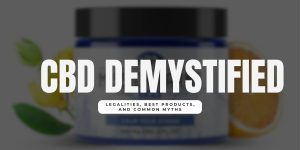
Blue oyster mushrooms are an easy, delicious way to get an extra dose of antioxidants and other important nutrients, no matter how you choose to enjoy them.
Blue oyster mushrooms are an extremely popular cooking ingredient in Asian cultures like Japan, Korea and China, but they are also enjoyed around the world. There are many varieties of oyster mushrooms, but the pearl oyster (Pleurotus ostreatus), blue oyster (Pleurotus columbinus) and king blue oyster (Pleurotus eryngii) are the most popular.

In terms of texture and flavor, blue oyster mushrooms are somewhat dense and chewy (they’re often used as a meat replacement!) with a mildly sweet, woody, umami flavor.
If you’re on the fence about whether or not to try adding an oyster mushroom recipe to your dinner rotation, here are a few reasons you definitely should!
Blue Oyster Mushrooms are Exceptionally Good For You
Whether you’re hoping to expand your meat-free diet or just want to try a new, healthy food, oyster mushrooms have some impressive health benefits, such as:
– They’re nutritious and antioxidant-rich.
Oyster mushrooms contain vitamins, minerals, fiber and protein in addition to antiaging antioxidants and amino acids (like ergothioneine, which is primarily found in mushrooms), which help to reduce cell damage and repair your cells. [1]
– They’re full of heart-healthy compounds.
Blue oyster mushrooms are high in beta-glucans, which can help lower bad cholesterol. They may also help with other heart disease risk factors like blood sugar regulation, insulin production and improving blood pressure. [2]
Cooking and Growing Oyster Mushrooms at Home

Surprisingly, it’s easy to grow oyster mushrooms. As long as they get enough warmth, humidity and fresh air, you can grow them in your home without much trouble. There are even ready-made grow kits that provide everything a beginner needs to get started growing oyster mushrooms at home. Click here for a step-by-step growing guide from Grocycle..
Blue oyster mushrooms have thick, meaty stems and caps, so they’re excellent as a meat substitute (they’re often compared to chicken when properly cooked). However, they can also be used to make soups, stews and gravies heartier and more flavorful without adding fat or carbohydrates.

The best way to cook oyster mushrooms is to sauté or fry them in oil over medium-high heat. Because these mushrooms have a mild, subtle flavor, you should add complementary seasonings like fresh thyme, shallots, garlic or rosemary. If you eat meat, they’re also ideal for pairing with flavorful cuts of meat because they readily absorb other flavors.

One of my favorite Pleurotus ostreatus recipes is slicing them and roasting them in the oven to make a savory, healthy (and low-carb!) snack. All you have to do is thinly slice them, toss them in olive oil and your favorite seasonings, place them on a lined cookie sheet, and bake them at 300°F (150°C) for about an hour.
FAQs
1. What are the side effects of oyster mushrooms?
In general, there aren’t many negative side effects of oyster mushrooms. Be cautious if you have fungus allergies or digestive sensitivities, though! Eating a large number of oyster mushrooms can cause stomach problems like nausea, bloating or indigestion.
2. Are blue oyster mushrooms psychedelic?
Psychedelic mushrooms contain a compound called psilocybin that causes the hallucinogenic effects associated with “magic mushrooms.” Blue oysters are not part of that group of mushrooms, so all you’ll get from them is a delicious meal!
3. What does blue oyster mushroom taste like?
Most people describe the flavor of blue oyster mushrooms as mild, earthy, woody, and slightly meaty. Food lovers sometimes say they get hints of spices like star anise as well.
References
[1] https://www.healthline.com/nutrition/oyster-mushroom-benefits#2.-Source-of-antioxidants
[2] https://www.healthline.com/nutrition/oyster-mushroom-benefits#3.-May-benefit-heart-health:~:text=3.%20May%20benefit%20heart%20health







